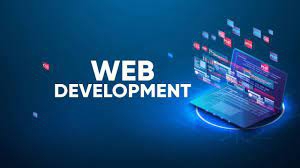In today's fast-paced digital era, web development stands as the cornerstone of the online world. From simple personal blogs to complex e-commerce platforms, web development plays a pivotal role in bringing ideas to life on the internet. This article delves into the intricacies of web development, covering its various aspects, tools, and trends that shape the digital landscape.
The Core Technologies
HTML: The Building Block
HTML (Hypertext Markup Language) serves as the foundation of web development. It provides the structure for web pages, defining headings, paragraphs, images, and links. Without HTML, there would be no web.
CSS: The Styling Guru
CSS (Cascading Style Sheets) is responsible for the presentation and styling of web content. It dictates the colors, fonts, spacing, and overall visual appeal of a website. CSS ensures that web pages look visually pleasing and consistent.
JavaScript: The Dynamic Force
JavaScript is a powerful scripting language that adds interactivity and dynamic behavior to web pages. It enables features like form validation, animations, and real-time updates. JavaScript is essential for creating engaging user experiences.
Back-End Development
While front-end development focuses on what users see and interact with, back-end development deals with the behind-the-scenes functionality of a website.
Server-Side Scripting
Back-end developers use server-side scripting languages like PHP, Python, and Ruby to handle requests, process data, and communicate with databases. This ensures that web applications can perform complex tasks and deliver dynamic content.
Databases and Data Management
Databases are crucial for storing and retrieving data in web applications. Popular database systems like MySQL, PostgreSQL, and MongoDB are used to manage large volumes of information effectively.
Front-End Development
Front-end development is all about creating a seamless user experience.
User Interface (UI) Design
UI design focuses on the layout, visuals, and overall aesthetics of a website. It aims to create an intuitive and visually appealing interface that users can easily navigate.
User Experience (UX) Design
UX design is concerned with the overall usability and accessibility of a website. It involves user research, prototyping, and testing to ensure that websites are user-friendly and meet the needs of their target audience.
Stay tuned for the second part of this article, where we'll explore full-stack development, web development frameworks, and responsive web design. Whether you're a seasoned developer or just starting your journey in the world of web development, understanding these concepts is essential to thrive in the digital landscape.
Conclusion
Web development is a dynamic field that continuously evolves to meet the demands of an ever-changing digital landscape. By staying updated with the latest trends and technologies, developers can create websites and web applications that not only meet user expectations but also excel in terms of functionality, security, and performance.




